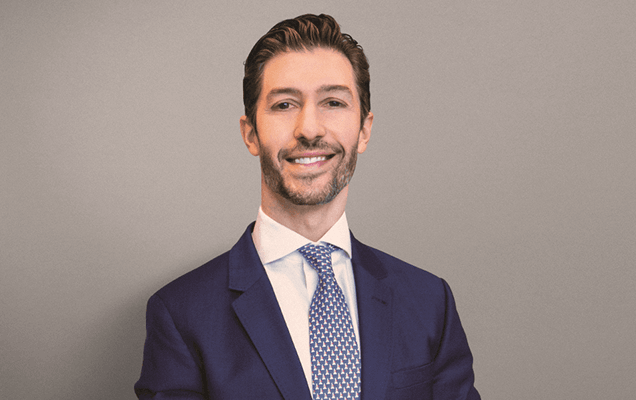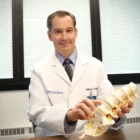Conservative estimates suggest Chiari malformation occurs in approximately 1 person out of every 1,000. Some of these patients are diagnosed because of symptoms, though others experience no symptoms and learn they have a Chiari malformation only when a doctor orders imaging or other testing for a completely different condition.
Your symptoms are just one factor that your doctor will take into consideration when deciding whether to recommend surgery as treatment. If your Chiari malformation has previously been monitored or treated with medication and symptoms are still present, your doctor will likely recommend surgery. By learning a little more about the treatment options available and why your doctor may recommend one over another, you can better understand your treatment plan and have more confidence in the care you receive.
Nonsurgical Options for Chiari Malformation
In some situations, your doctor will suggest nonsurgical methods, such as monitoring and/or medication, prior to recommending surgery. This could be because your symptoms are minor, or even nonexistent, or because the potential risk of surgery is higher than the potential benefit.
If you are a patient who does not undergo surgery, your doctor will typically put you on a monitoring schedule where you will return for follow-up visits and MRI imaging. This schedule will be determined by your doctor based on your individual case.
If your symptoms are mild or infrequent, nonsurgical treatment options may include medications as needed. Your doctor may also recommend that you attend physical therapy to help with minor pain or movement issues.
Factors that Warrant Surgery for Chiari Malformation
Your doctor will take multiple factors into consideration before recommending surgery for your Chiari malformation. Each plays an important role and will inform the course of treatment your doctor plans.
Your Symptoms
If your symptoms are causing you difficulty or discomfort, your doctor may recommend surgery as the option most likely to provide relief. If your symptoms stem from the actual malformation or the buildup of cerebrospinal fluid (CSF) in the spinal cord, surgical alleviation of that pressure may be the only way to stop the progression of symptoms.
Your Health
Not all patients will be candidates for surgery. Sometimes other health conditions or medications increase the risk for surgery, in which case your doctor will recommend nonsurgical options. If the potential risks outweigh the potential benefits of a procedure, your doctor will not recommend it.
Your Malformation
Every patient is different and your Chiari malformation is going to be unique to you and your anatomy. Your doctor will consider the progression of your symptoms, the nature of the CSF blockage, as well as which areas of the brain or spinal cord are impacted.
Let's build your treatment
path, together.
Surgery for Chiari Malformation
If your doctor does recommend surgery for your Chiari malformation, there are a few surgical options available. They fall into two general categories: traditional surgical treatment and minimally invasive surgical treatment.
Traditional Options
For most patients, traditional treatment will include dural opening Chiari decompression. The goal is to remove a small section at the base of your skull to create more space for the brain, relieving the CSF buildup and pressure that has led to your symptoms. The surgeon will then apply a special material to patch the site before closing it with sutures or staples. This procedure has historically been the gold standard for Chiari malformation surgery and is suitable for many patients.
Another procedure that is often performed in combination with dural opening Chiari decompression is a cervical laminectomy. During this procedure, the surgeon will remove a piece of the vertebra at the top of your spine, just below your skull. As with the decompression surgery, this helps create more space and alleviate the pressure that has built up within the skull. While this surgery may be used alone, it is more often used as an adjunct therapy.
Minimally Invasive Options
Technological advancements have also made possible a procedure known as minimally invasive Chiari decompression. This procedure accomplishes the same goals as traditional decompression surgery, but surgeons are able to create a smaller incision using specialized instruments and microscopic visualization.
The minimally invasive approach to decompression surgery was pioneered by Neurosurgeons of NJ and has demonstrated excellent results. Most patients who are candidates for traditional surgery qualify for this procedure and can benefit from a smaller incision, shorter surgical time, lower risks, reduced healing time and reduced pain as a result.
Making the Decision
When you sit down with your doctor to discuss your treatment plan, he or she will present you with the option that will be the best fit for you. Because you’ve taken the time to learn more about your options, you will have a better understanding of your choices and the reasoning behind your doctor’s recommendation.
If you find that you still have questions or concerns, consult with your doctor. He or she will prioritize your level of comfort with your treatment, not just during the procedure, but in the time leading up to it. With this information, you can engage your doctor in a more meaningful dialogue that will give you peace of mind, whether or not you undergo surgery.

About Dr. Paul R. Gigante
Dr. Paul Gigante is an accomplished neurosurgeon in Central Jersey and a proud member of Neurosurgeons of New Jersey, practicing out of their Livingston office located conveniently on South Orange Avenue. He is recognized as a leading spine surgeon for both minimally invasive and complex procedures. Dr. Gigante is a graduate of Harvard Medical School and completed his fellowship at Stanford University in functional neurosurgery. His specialties are deep brain stimulation for Parkinson’s Disease and other nervous system disorders, spinal cord stimulation for chronic pain disorders, and surgical treatments for chronic nerve pain conditions. He also specializes in brain tumor surgeries. Dr. Paul Gigante is currently accepting new patients.






